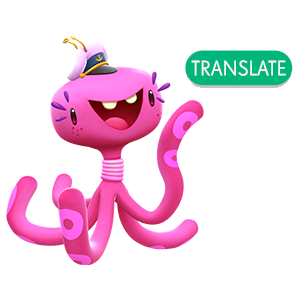
The Community in more languages
Now the forum welcomes more languages.
You'll see a green translate button in comments and discussions to turn them into English

‘A keystone species, by definition, has the power to largely effect entire ecosystems simply by performing natural behaviors for survival. Impressive? We’d say so. Many ecologists consider apex predators such as sharks, killer whales, and wolves to be keystone organisms, since they maintain balance of biodiversity and resource (e.g. food) availability. From the top to the bottom of the food chain, there are many species of both flora and fauna that are crucial to the existence of their ecosystems as we know them.
So, maybe ecosystems would collapse if keystone species go extinct, but how would this happen and why should we care? The planet is currently experiencing a mass extinction of life – one out of six mass extinctions that have occurred throughout Earth’s history (based on scientific estimations). Since the number of species on Earth is an ambiguous approximation, it is challenging to accurately quantify how many species are becoming extinct. However, according to the World Wildlife Fund, scientists believe between 10,000 and 100,000 species cease to exist every year due to habitat loss, resource depletion, climate change, and other factors. How could this be? Wouldn’t we hear about these organisms on the news? Perhaps the projected tens or hundreds of species going extinct each day are not the cute or beautiful creatures we are taught to care about. In fact, you may not be aware of many species that are actually very important to our own existence!
Bees - Bees aren’t called busy for nothing! These important agricultural workers are primary species that fertilize many edible plants, not only for us humans, but for many other animals as well. Bees are responsible for pollinating approximately 250,000 plant species. Imagine what would happen to herbivores dependent on these plants if bees vanished!
Gopher Tortoise - Native to the southeastern United States, these animals are phenomenal at digging holes. You might be thinking, “Who cares?!” Actually, hundreds of species do! Animals such as raccoons, rattlesnakes, gopher frogs, burrowing owls, the Florida mouse, endangered indigo snakes, and over 350 other species are provided shelter from sharing these burrows created by tortoises. Gopher tortoises are quite the hospitable hosts, don’t you think? Without gopher tortoises, many of these species would not be able to survive due to their dependence on burrows for shelter. Sadly, habitat destruction has led the gopher tortoise to be a threatened species. Fortunately, the Florida Fish and Wildlife has a gopher tortoise management plan to help protect this vital species.
Ivory Tree Coral - If you’ve ever seen pictures of or visited a coral reef ecosystem, it’s obvious that if corals ceased to exist, the intricate ecosystems and the organisms that live within them would also cease to exist. Ivory tree coral is an exceptionally significant coral species to their main ecosystem located off the coast of east-central Florida. They can grow in both shallow and deep waters. Research has found evidence of the relationship between the abundance of individual fish species and the wellbeing of ivory tree corals. Therefore, they are not only a keystone species, but also an indicator species for the health of their environment. According to the National Oceanic and Atmospheric Administration (NOAA), there are existing conservation programs to protect these corals. ’ (Source)
Let’s continue - Tiffi is surprised to learn all of this
Start at the beginning - The ecosystem and how it relates to endangered species